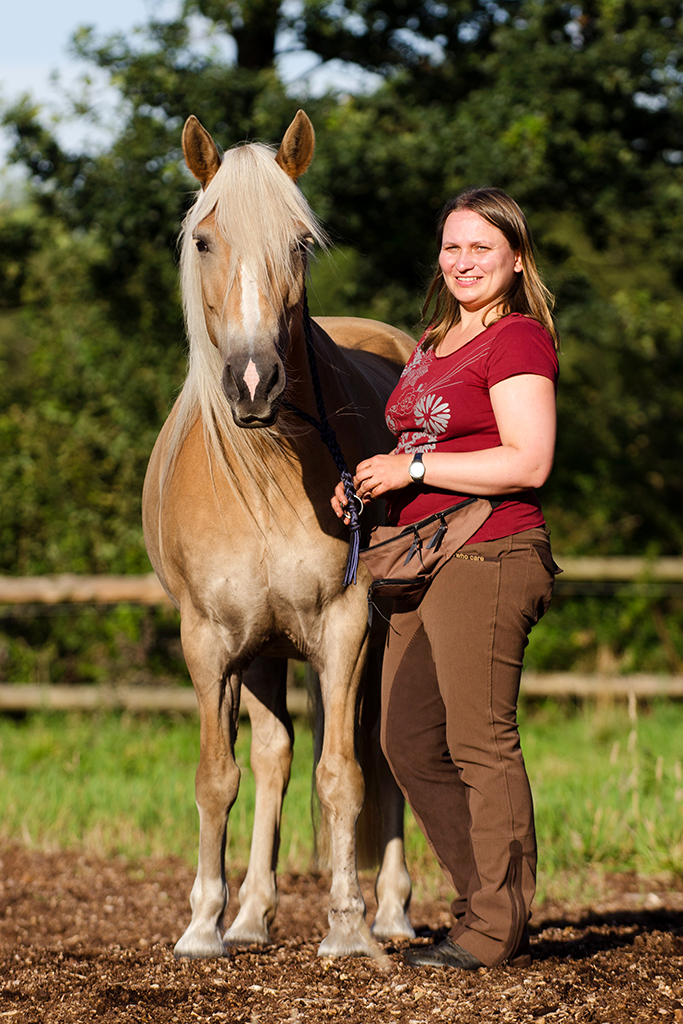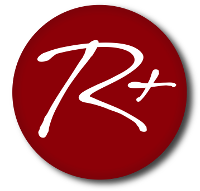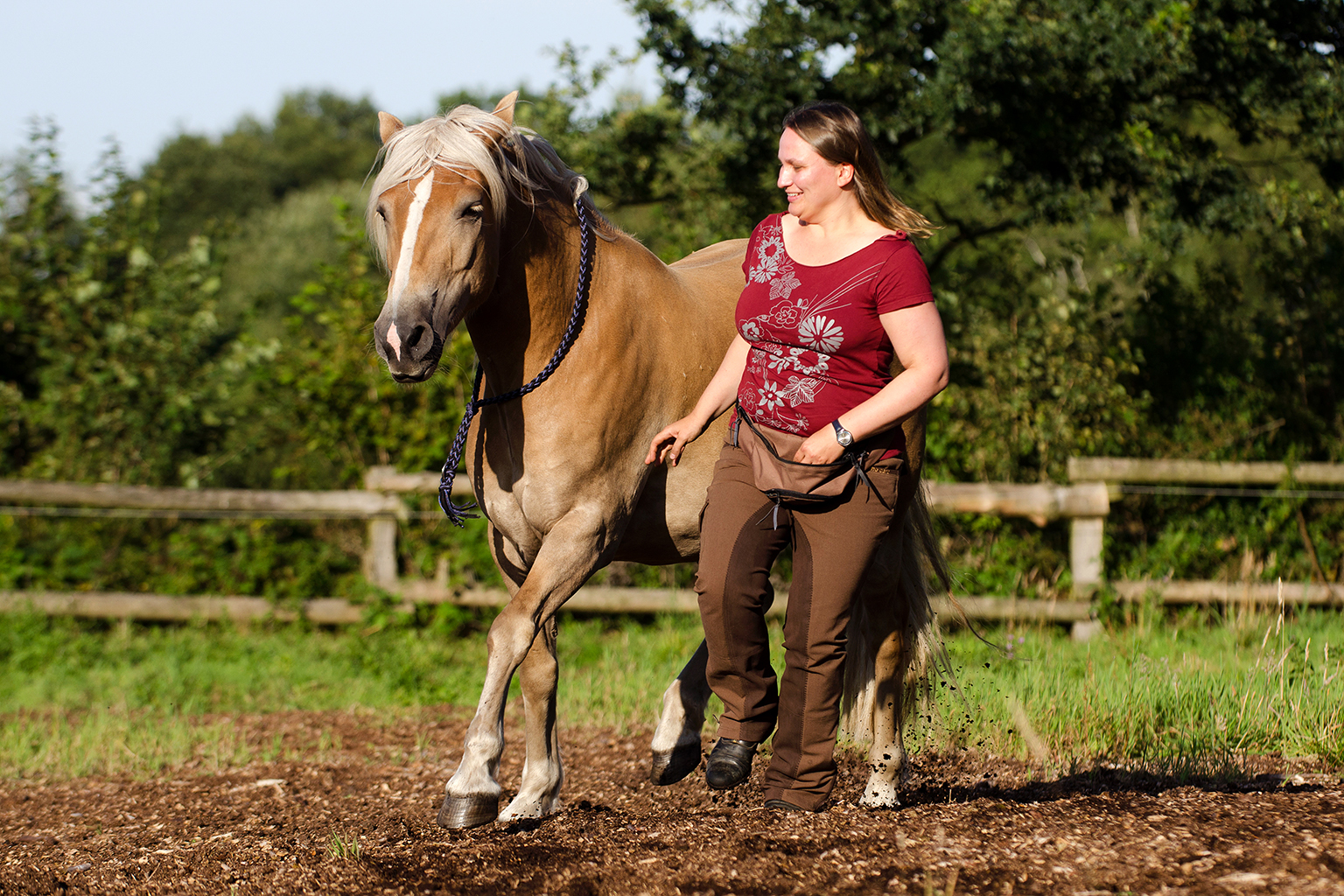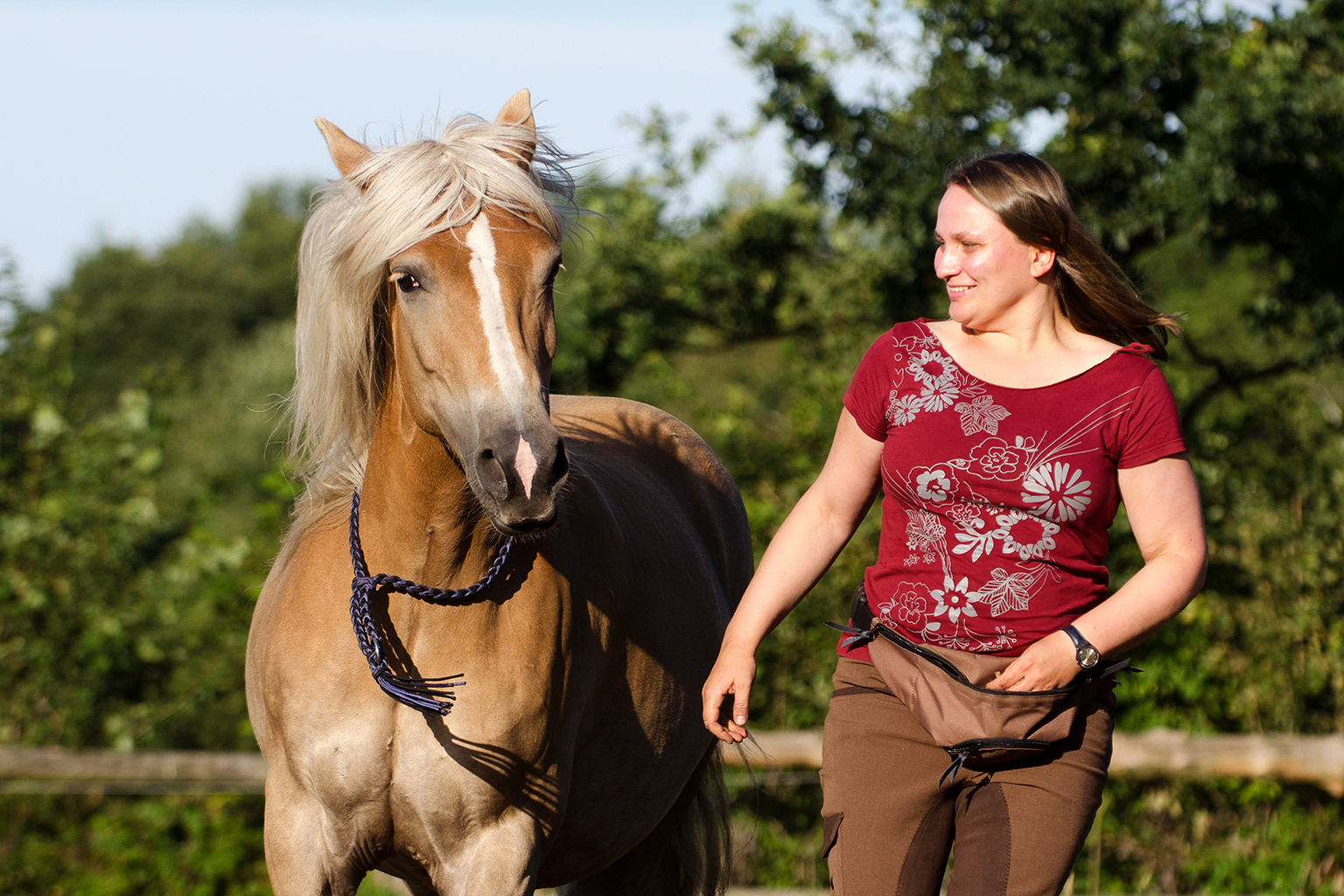Discover free work – Video 1
Motion energy arises in motion
Motion is not just an aspect of movement. Horses, just like humans, do not move from A to B as quickly as possible but express their feelings through body language and the way they move. In fact, the word emotion derives from the Latin term “emovere” which means “to move”. Ultimately, all movement, even if too small to perceive on a conscious level, originates from a resonating emotion. Free work offers the possibility to communicate with the horse on the emotional level we share, and allows us to enter into direct contact with the horse’s soul. Specifically, Salima, the thoroughbred Arabian Mare, and her favorite human being Lea show us how a mare returns to shared leisure activity after being pregnant and caring for her foal.
Subtitles available in English and German
Aspects of freedom
Our special edition „a vision of freedom“ is about creating a dream. What would I like to do with my horse? How do I want to creatively spend our common time? What is the most beautiful possible version of us? What are the motion patterns that really give us pleasure and are absolutely fascinating? For example, Salima is very agile like many Arabian thoroughbreds. It is rather easy for her to switch between very distinct motion patterns, and to adequately adapt her level of energy.
Classical conditioning’s role
RPlus is more than just clicker training. It is very important for me to regularly think about my goals at that moment in training. So, I use precise clicking and treat giving to establish a narrowly defined, specific behavioral response. In contrast, I use casual rewards without clicking if I want to sense a horse’s mood, work on the bigger picture, and create space for creativity. This requires a horse that is not stressed by the presence of food, and has not resigned into pure courtesy training yet. In reality, both levels of training operate simultaneously but I internally choose one: Either, I focus on the operant mode, and aim to direct the horse’s attention towards specific details with clicks and treats; or I use a more traditional conditioning mode, and directly mark moments, postures, and movements with treats but without a marker signal. I will return to the pros and cons of both types that always interlock, in my opinion, elsewhere in RPlus. Here, it only serves as good example to demonstrate how classical conditioning can smoothly guide the overall atmosphere, and create motion energy.
Free choice of methods
In my opinion, this freedom of choice of method means that I am not restricted to constantly trying to imitate an exact sequence of specific motion elements. Yet, I aim for approximating the length of my steps, and how high I lift my feet off the ground first. This is because moving smoothly, and having a pleasant distance to one another significantly facilitates first attempts at free work.
Marking an overall situation
In general, horses are aware that they have to be in action mode, and aim to solve a “riddle” when working with traditional clicker training based on marker signals. In contrast, casually giving rewards like in our situation makes the horse quickly understand that it can remain in a rather unconscious mode that allows acting more from within according to my experience. The more consciously you combine both approaches, the more you will be able to use the advantages of either one of them for yourself. For example, our video is about the free development of motion energy, and not about training a narrowly defined behavioral response; we consciously live our being together, and this is not about the precision of doing something. Consequently, details of execution are irrelevant in the beginning. Even worse, the horse’s intuitive state would likely be disturbed if we clicked and marked at this stage, and it would be influenced by us in a direction we provide.
Take up ideas of the horse
The video shows how Lea has casually been rewarding the trot for a longer period of time in this training session. So, Salima makes the suggestion to enter into canter after a while. The tight structure of clicker sessions would open up the question whether it is possible to click such a behavior even if we have not given the signal for canter. From the perspective of classical conditioning, however, we can simply pick up Salima’s idea, and just continue our work in canter without confronting her with detailed questions like: Has there been a signal for canter? And, what is the precise signal for canter after all?

Precision as contrast
Trained horses like Salima allow switching between modes: We can alternate casual sessions based upon classical conditioning with lessons that require performing specific details; latter clearly belong to the operand mode, and we thus aim for precise clicking and exact giving of treats. Between the casual sessions in which we focus more on classical conditioning, experienced horses such as Salima can interrogate lessons in which we work on clear details and in which we clearly move in the operant mode and therefore with precise click and exact feed praise work.
Mental breaks
In a sense, the periods in which we work more casually, so to say, more on the level of classical conditioning, can be considered mental breaks. We are continuously training. So, it is impossible for a horse to not learn from a situation; Salima is going to subconsciously acquire a lot of knowledge in such sessions. She needs not to focus, and learns without significant cognitive effort because we try to leave the situation on a rather subconscious level. In my opinion there are two types of breaks: On one hand, I can rest with my horse in peace; they are physical breaks. On the other hand, there are breaks that allow the horse to completely shut down its focused part of concentration; they are mental breaks. This means, they are not “on fire” but rather in a more intuitive state of mind that, in my opinion, is crucial to enjoy creativity, play, and personal initiative.
Marlitt Wendt & Conny Ranz




